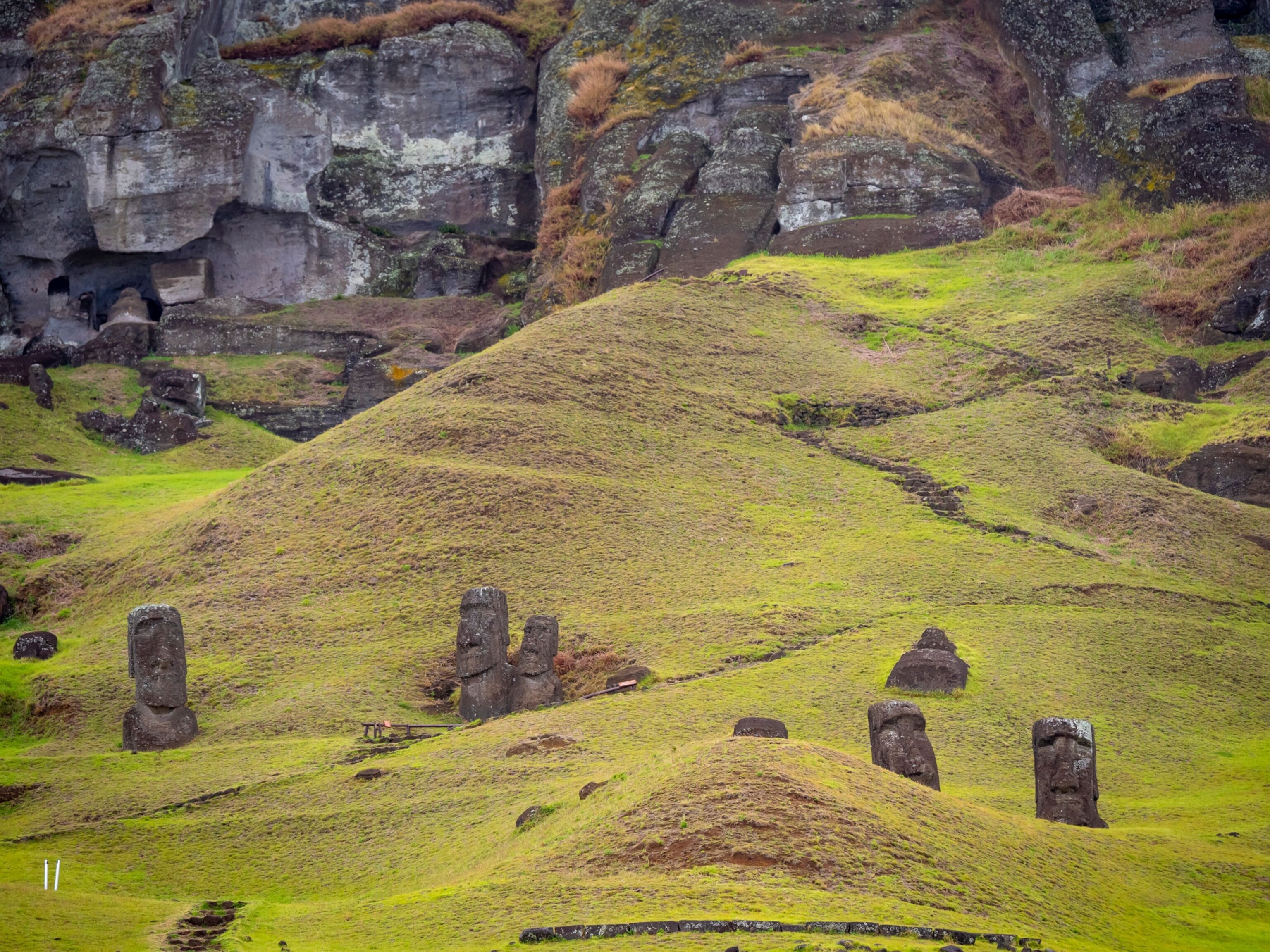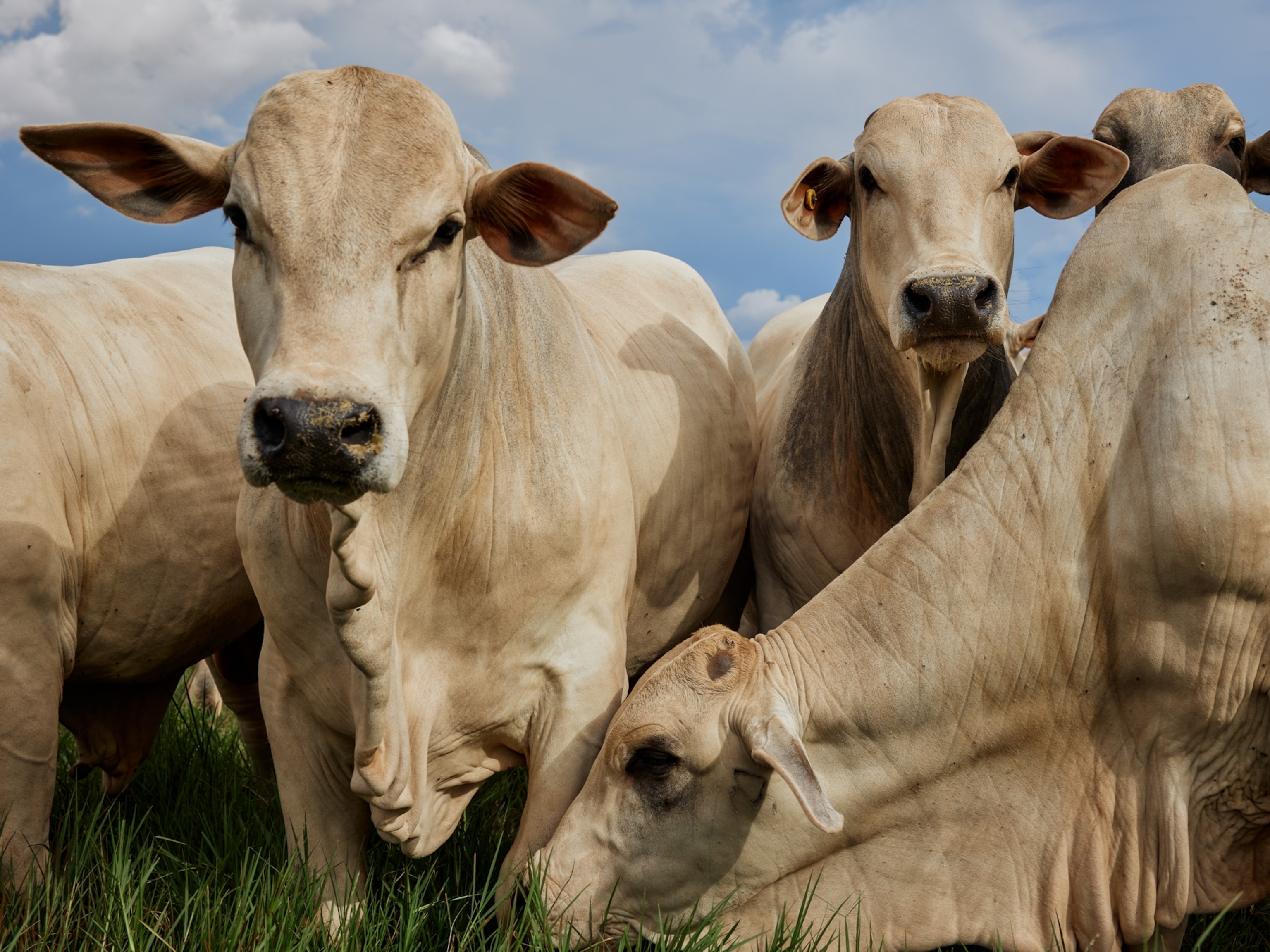
Easter Island’s iconic statues remain at risk after devastating fire
Recent blazes chewed through the heritage site, causing “irreparable” damage to hundreds of Rapa Nui’s sacred moai. Here's what you need to know.
One of the most remote inhabited locations on Earth, Easter Island is famous for the thousand or so enigmatic, towering statues that dot its landscape, called moai.
Earlier this month, a fire caused “irreparable damage” to hundreds of moai, according to the local government of the island, known as Rapa Nui to locals.
Although the true toll is still being assessed, the disaster is just one of the many threats to these sacred statues—along with climate change and human activities. To the Rapa Nui people, the risks are profound, says archeologist Jo Anne Van Tilburg, director of the Easter Island Statue Project.
“They cherish the memory of the people that have gone before,” she says. “They’re angry that so much was lost through no fault of their own.”


Much knowledge about the history and traditions of the Rapa Nui people have been lost to time. But there is much we do know about the statues and the rich culture that built them—and how they can be protected for ages to come.
What are the moai—and who built them?
At latest count on the island, there are 1,043 complete moai, enormous statues with prominent heads made from volcanic stone. Contrary to popular belief, they aren’t just heads—they have torsos too, though many are partially or completely buried. On average, they reach 13 feet in height and weigh 10 metric tons.
Most of the statues stand with their backs to the sea on stone platforms called ahu, which hold up to 15 statues. Some moai are adorned with cylindrical red stones called pukao on their heads, which represents a topknot of hair.
But the true number of moai on the island is unknown because many remain buried in the Rano Raraku quarry on the island’s south shore, where the statues were built. The largest discovered moai, named “El Gigante,” is one that never made it out of Rano Raraku—it is 69 feet tall and is thought to weigh about 200 metric tons.
These statues were erected hundreds of years before the first European arrived on the island on Easter Sunday 1722. Van Tilburg believes Polynesians discovered the island around A.D. 1000, and developed advanced social, political, and religious systems that produced the noble moai.

The oldest statues found on the island can be traced back to 1300, and the youngest dates to the late 1500s or early 1600s.
Why were the moai built?
The Rapa Nui people believed that their chiefs were descended from the gods, and that after death they would once again become divine. The statues were built to temporarily contain the spirits of their ancestors. The ahu upon which they stand were once the sites of death rituals—and excavations have found human remains, both cremated and buried, at some sites.
“It is my personal theory [that the moai] are containers into which these moving spirits can be captured and held safe so that they can continue to aid people that were left behind,” Van Tilburg says.
(Here’s how to discover the mysteries of Rapa Nui yourself.)
There’s a clear connection between the Rapa Nui’s moai and similar monoliths found around Polynesia. Experts believe these statues came from a common religion—even if they don’t always look alike.
“Containers in Hawaii, for example, are quite fierce. Their faces are twisted and turned with anger,” Van Tilburg says.“It’s only the Rapa Nui sculpture that says to us, it’s 100 percent human.”
Today, they are still considered sacred—touching the moai is illegal—and a source of spiritual life force, or mana.
How were the moai built?
The Rapa Nui people carved the moai directly from volcanic tuff, a porous stone made of solidified ash, in Rano Raraku, an extinct volcano.
The moai carvers were considered master craftsmen and honored for their work. Their process was incredibly secretive, Van Tilburg says, and carvers took great care to not offend spirits during construction.
It’s believed the carvers would begin working on the front and sides of a statue, then gradually separate the back from the quarry rock. The statue would then be moved downhill and placed upright in a hole, where the carvers would finish its back and add petroglyphs to its surface. With that, the statue would be complete.
What happened to the people who built the moai?
The island’s plentiful resources were quickly depleted as the population grew. By the time the first European came to the island in the 1700s, the island was deforested, likely to make space for crops. Without trees, the people tried to adapt: evidence shows there were isolated efforts to reforest the island, Van Tilburg says.
(Why the Rapa Nui’s weapons were deliberately non-lethal.)
The Rapa Nui also migrated within the island, both inland and to the coast. Inland, farmers created advanced systems for crops like taro and sweet potato that protected them from high winds, temperature fluctuations, and rapid evaporation, according to archeologist Mara Mulrooney, who studies Rapa Nui land usage.
But colonization, slave trading, and several epidemics took their toll. By 1877, the island’s population dwindled to as little as 111.The population has rebounded, with an estimated 2,000 native people living there today in a population of about 7,000. But threats to the island itself remain.
How are humans affecting the moai?
The vast majority of moai line the island’s coast, which is immediately vulnerable to rising sea levels caused by climate change and coastal erosion. The Rapa Nui predicted this centuries ago and built sea walls, some of which are crumbling and require reinforcement, Van Tilburg says.
Van Tilburg says the Rapa Nui people have traditionally been in charge of that upkeep: “It was the responsibility of the group to do things on a seasonal basis that protected their sites—they were supposed to weed them before ceremonies, they were supposed to mend the wall.”
But in recent years it’s been difficult to scrape together the financial support for such repairs, particularly amid debates over jurisdiction between local communities, private families, and the Chilean government.
How has the fire affected the moai?
Hundreds of moai, mostly around the Rano Raraku quarry, were damaged in the October fire.
Photographs of the moai show surface damage greater than has been seen in past fires, Van Tilburg says, which could indicate cracking on the interior of the stone. If that’s the case, she says, heavy rains may cause the stone to crumble.
“The statues, the portions of the statutes above ground, have unknowable damage at the moment,” she says.
But with pandemic restrictions preventing visitors from coming to the island, the world must wait to see the true extent of damage.
You May Also Like
Go Further
Animals
- How can we protect grizzlies from their biggest threat—trains?How can we protect grizzlies from their biggest threat—trains?
- This ‘saber-toothed’ salmon wasn’t quite what we thoughtThis ‘saber-toothed’ salmon wasn’t quite what we thought
- Why this rhino-zebra friendship makes perfect senseWhy this rhino-zebra friendship makes perfect sense
- When did bioluminescence evolve? It’s older than we thought.When did bioluminescence evolve? It’s older than we thought.
- Soy, skim … spider. Are any of these technically milk?Soy, skim … spider. Are any of these technically milk?
Environment
- Are the Great Lakes the key to solving America’s emissions conundrum?Are the Great Lakes the key to solving America’s emissions conundrum?
- The world’s historic sites face climate change. Can Petra lead the way?The world’s historic sites face climate change. Can Petra lead the way?
- This pristine piece of the Amazon shows nature’s resilienceThis pristine piece of the Amazon shows nature’s resilience
- Listen to 30 years of climate change transformed into haunting musicListen to 30 years of climate change transformed into haunting music
History & Culture
- Meet the original members of the tortured poets departmentMeet the original members of the tortured poets department
- Séances at the White House? Why these first ladies turned to the occultSéances at the White House? Why these first ladies turned to the occult
- Gambling is everywhere now. When is that a problem?Gambling is everywhere now. When is that a problem?
- Beauty is pain—at least it was in 17th-century SpainBeauty is pain—at least it was in 17th-century Spain
Science
- Should you be concerned about bird flu in your milk?Should you be concerned about bird flu in your milk?
- Here's how astronomers found one of the rarest phenomenons in spaceHere's how astronomers found one of the rarest phenomenons in space
- Not an extrovert or introvert? There’s a word for that.Not an extrovert or introvert? There’s a word for that.
- NASA has a plan to clean up space junk—but is going green enough?NASA has a plan to clean up space junk—but is going green enough?
Travel
- Germany's iconic castle has been renovated. Here's how to see itGermany's iconic castle has been renovated. Here's how to see it
- This tomb diver was among the first to swim beneath a pyramidThis tomb diver was among the first to swim beneath a pyramid
- Food writer Dina Macki on Omani cuisine and Zanzibari flavoursFood writer Dina Macki on Omani cuisine and Zanzibari flavours
- How to see Mexico's Baja California beyond the beachesHow to see Mexico's Baja California beyond the beaches







